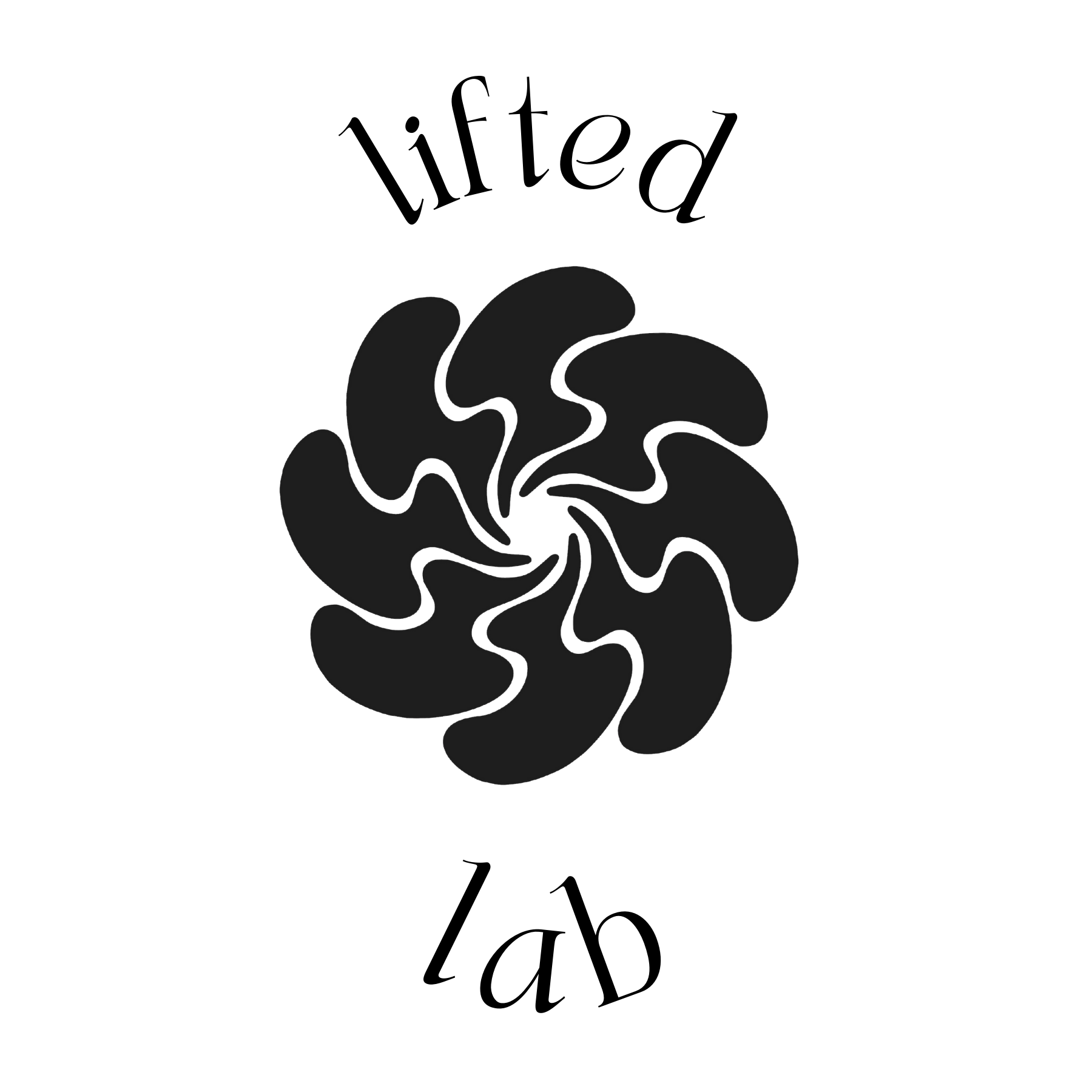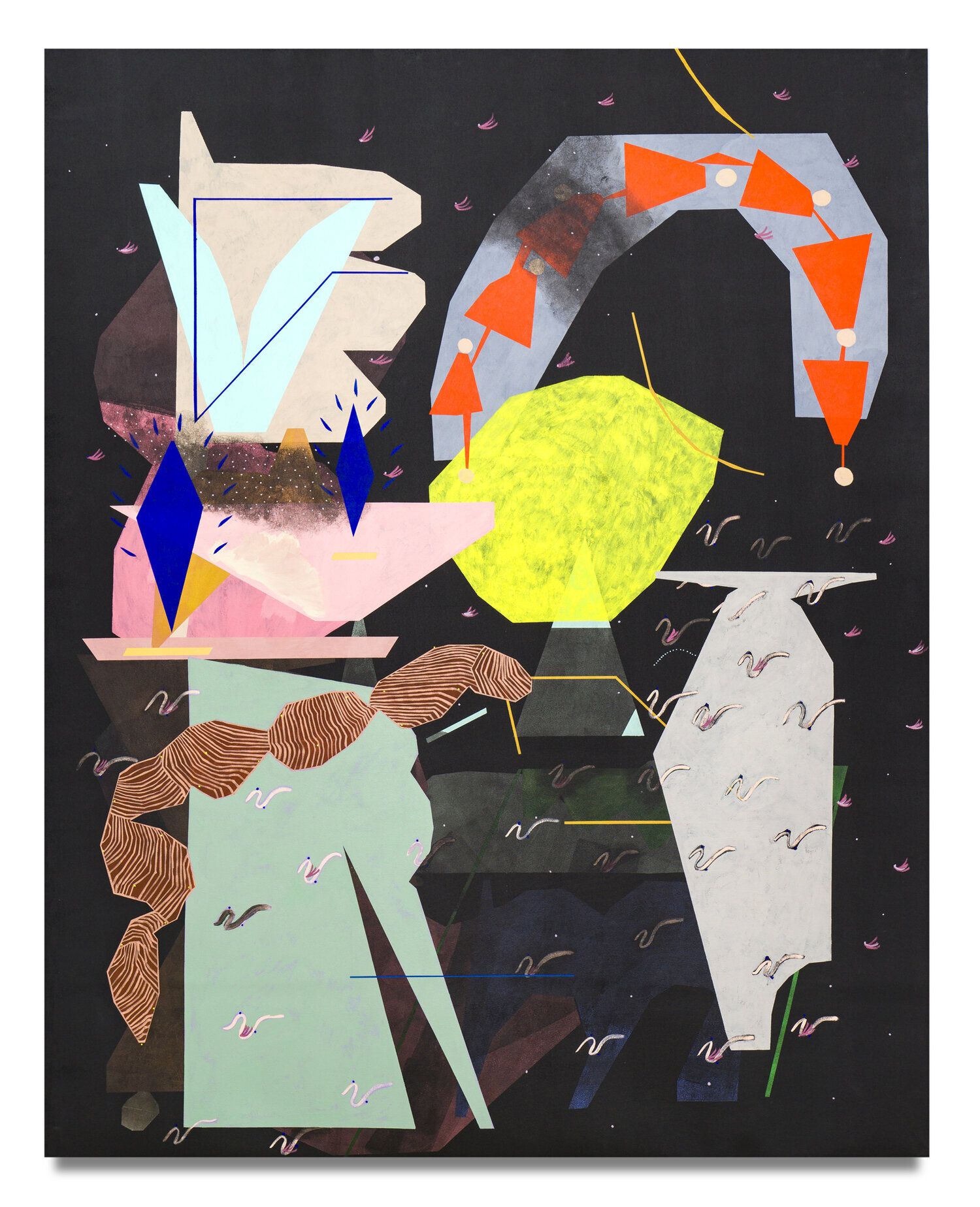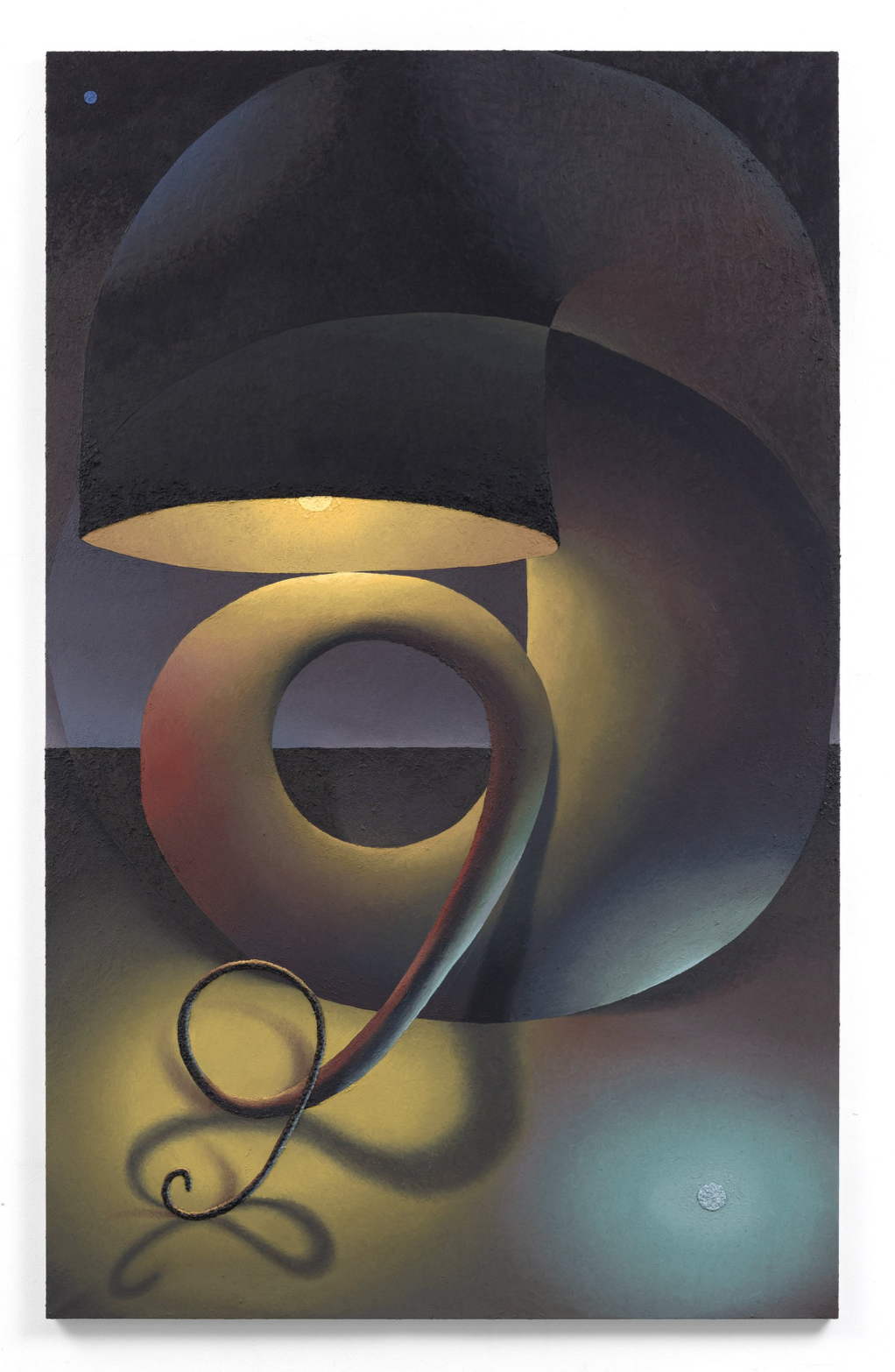Monir Shahroudy Farmanfarmaian “The Language of Symbols”

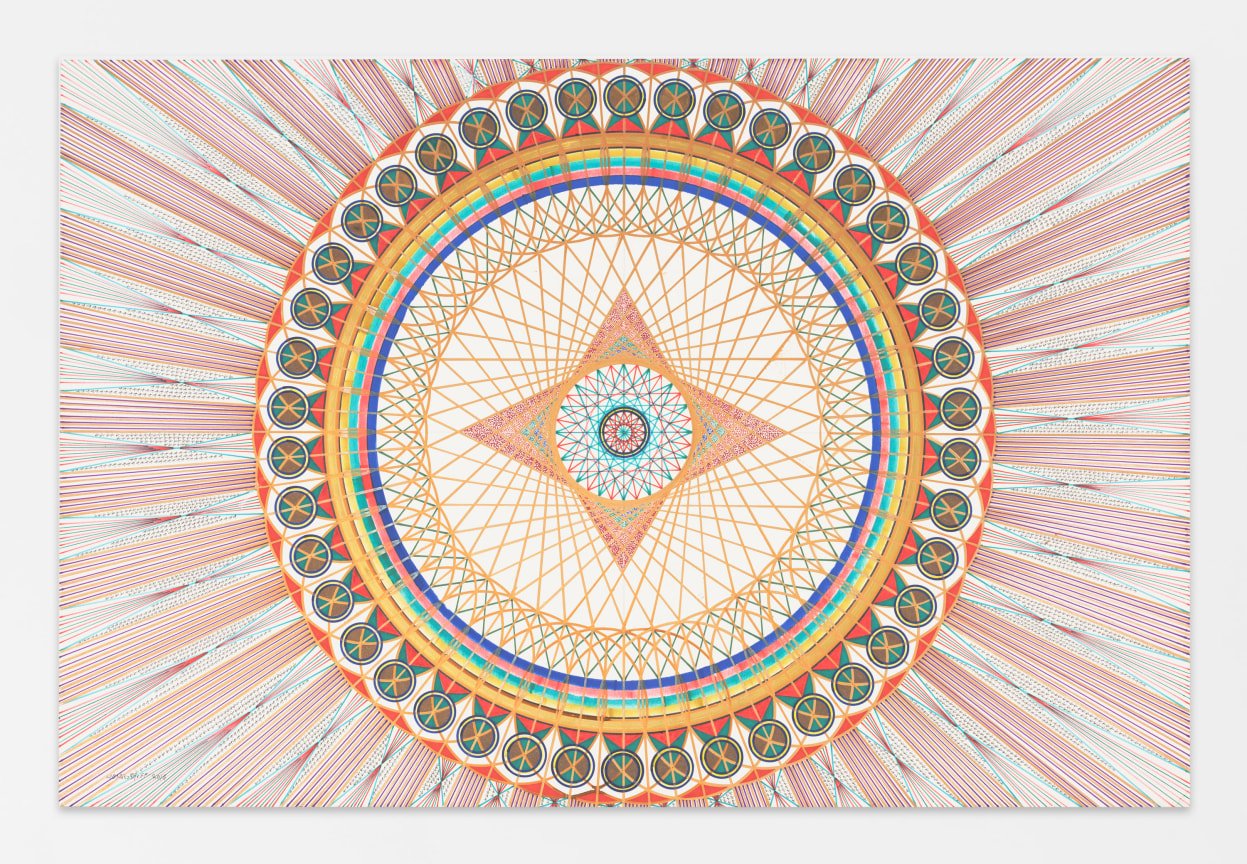
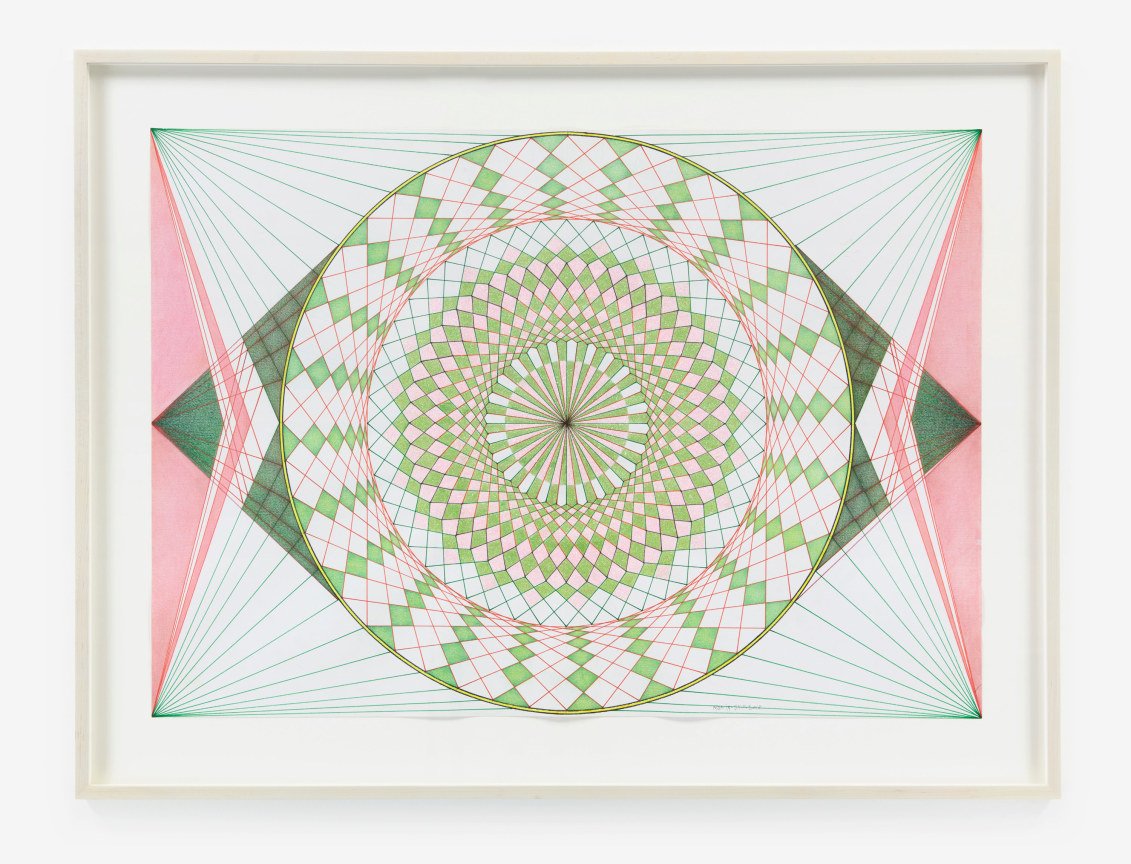

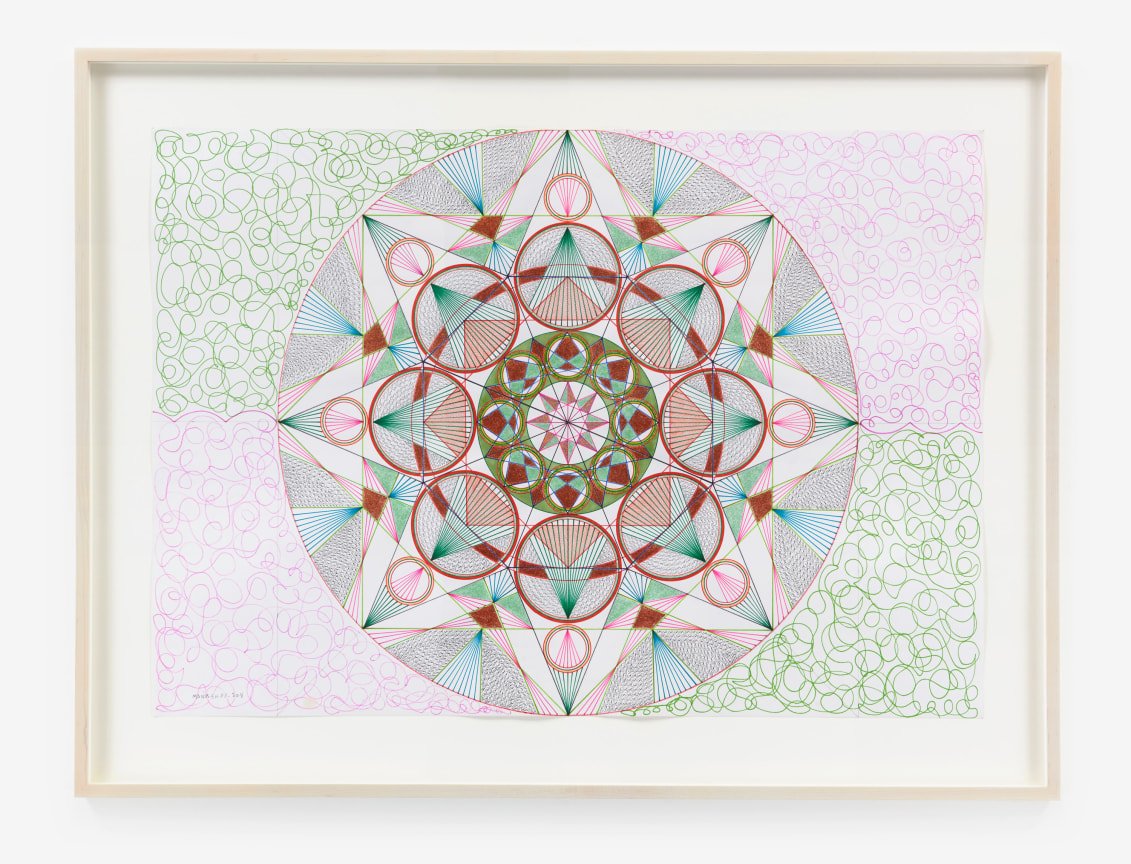

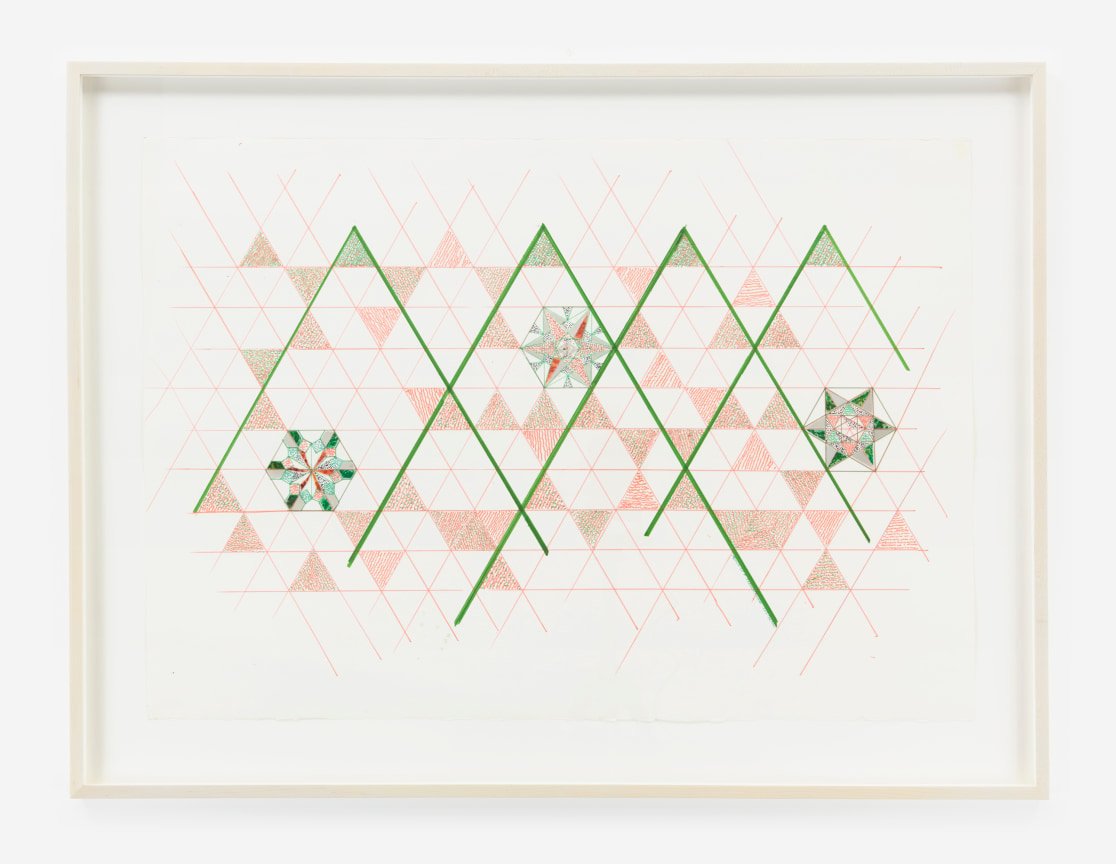
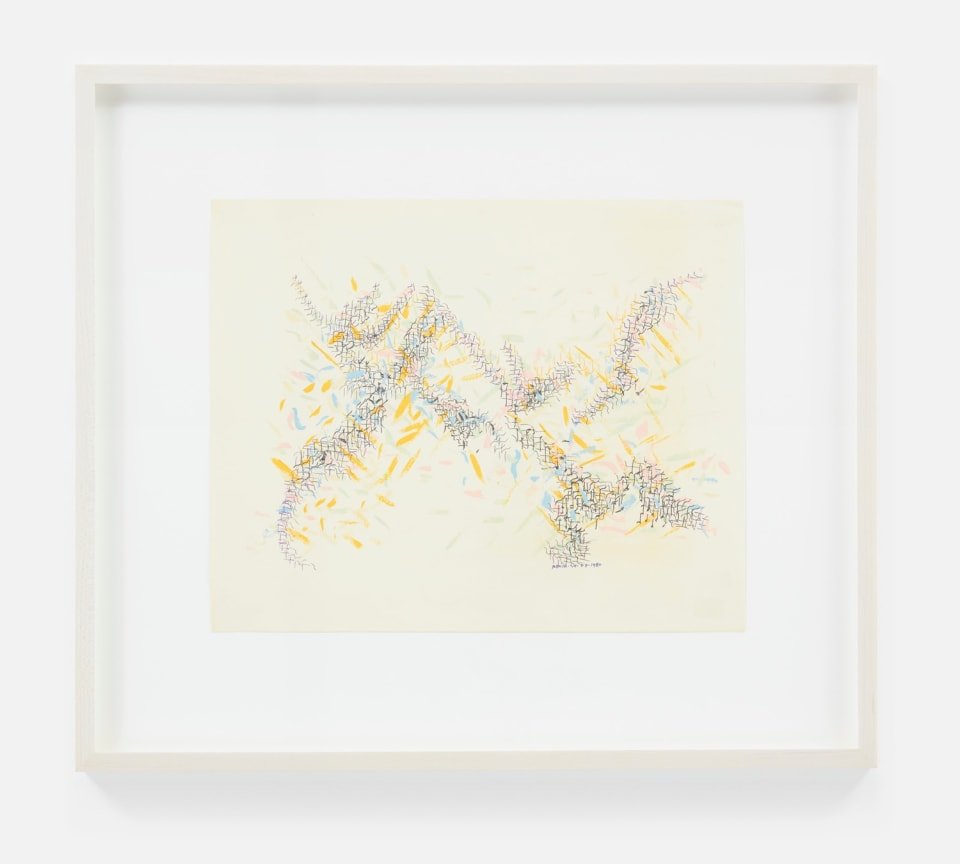


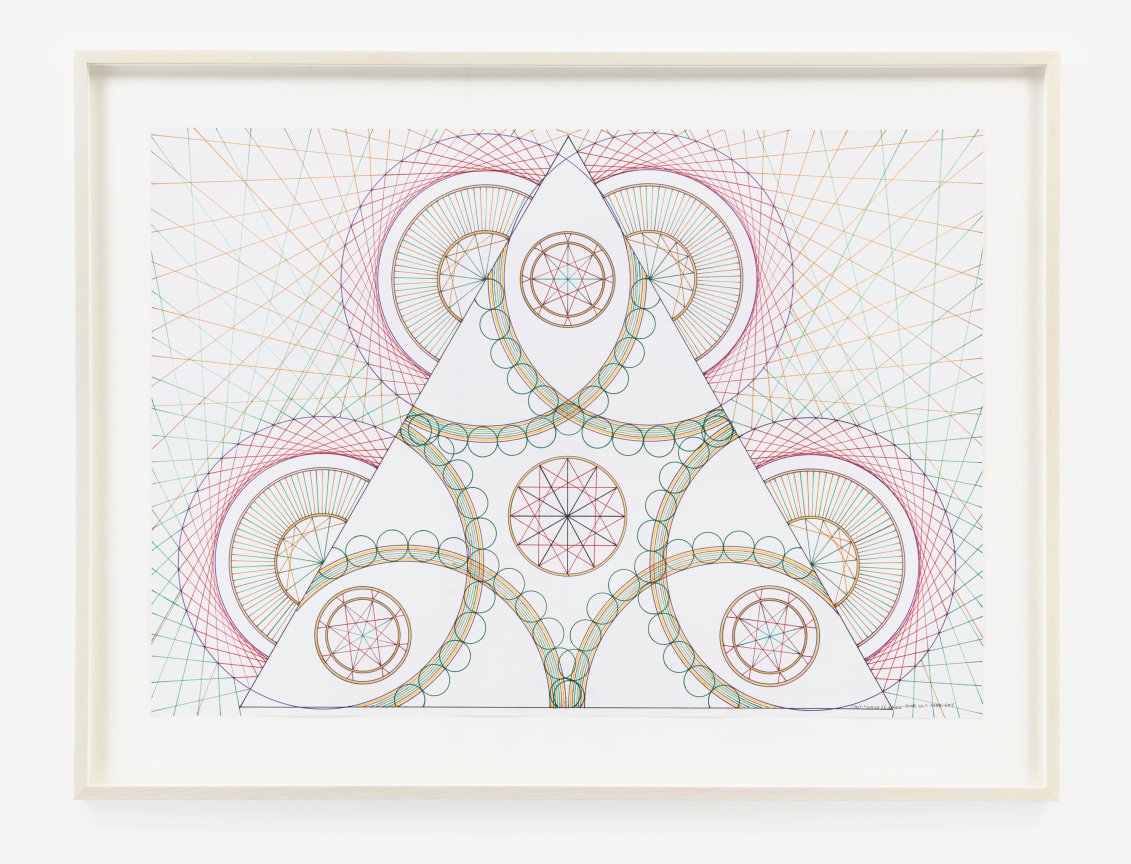
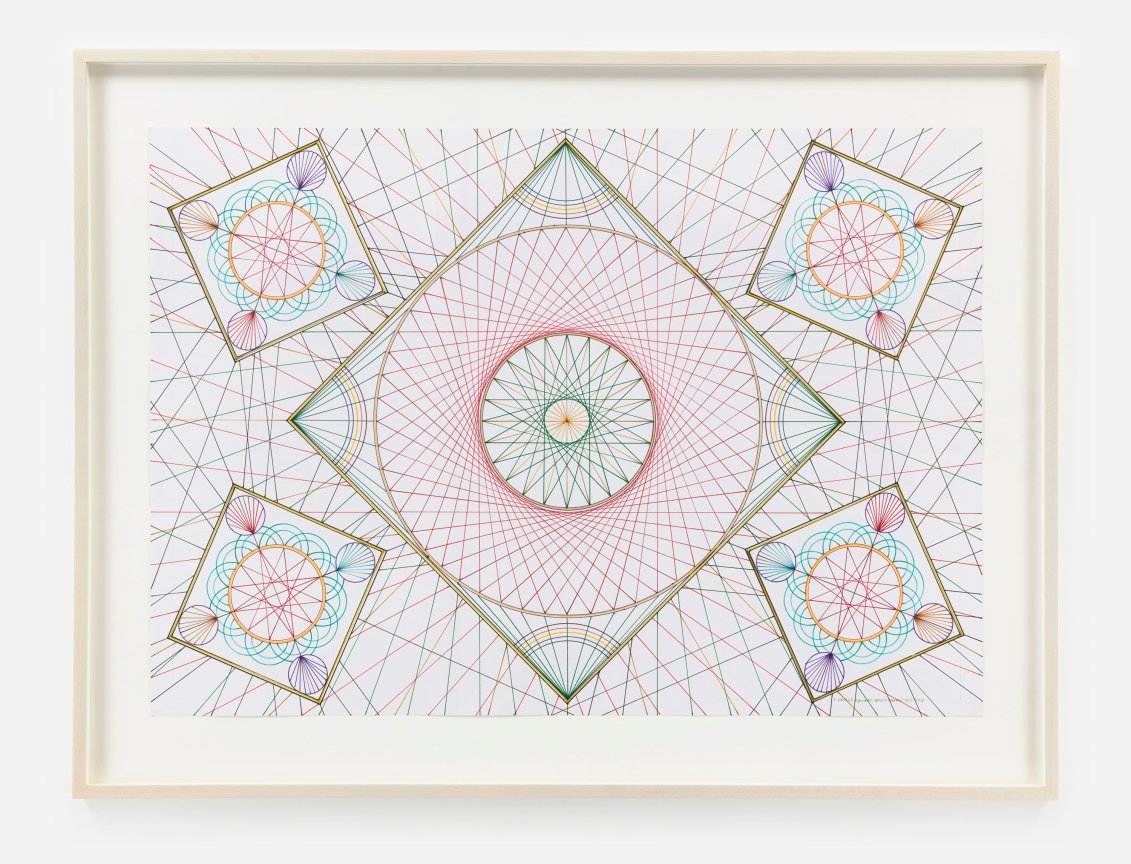
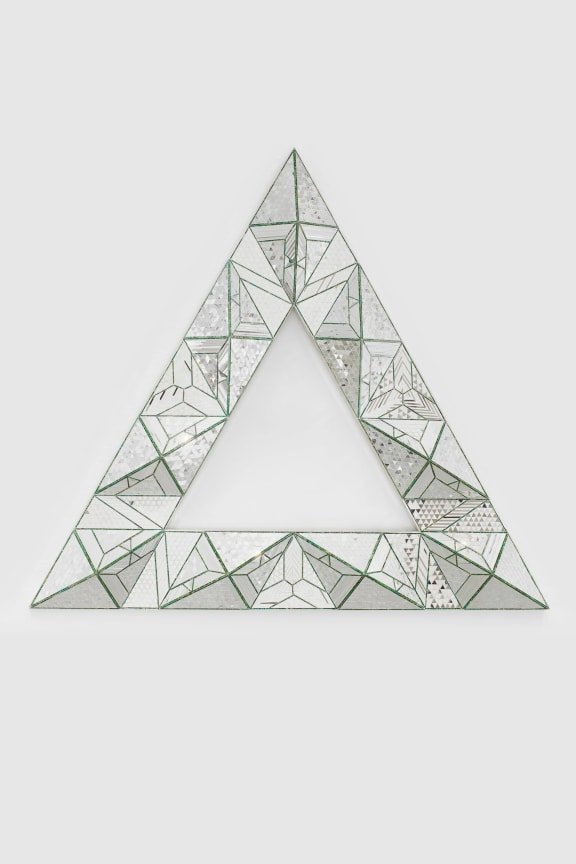
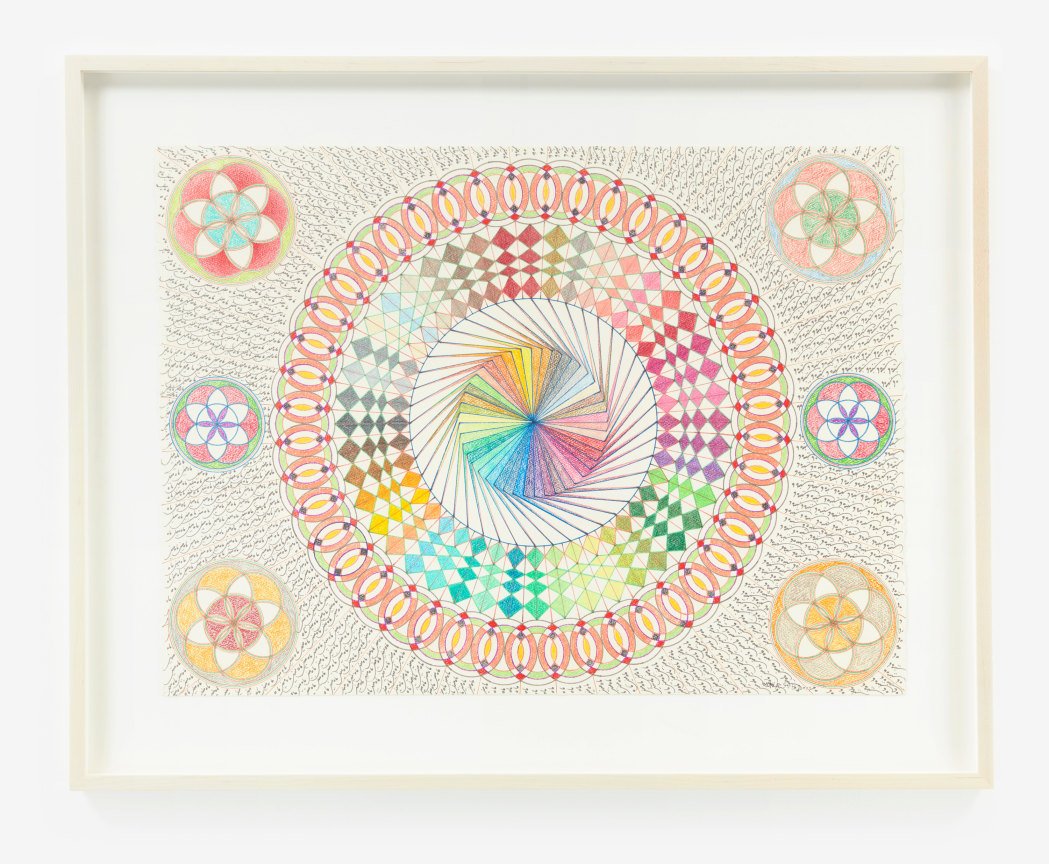
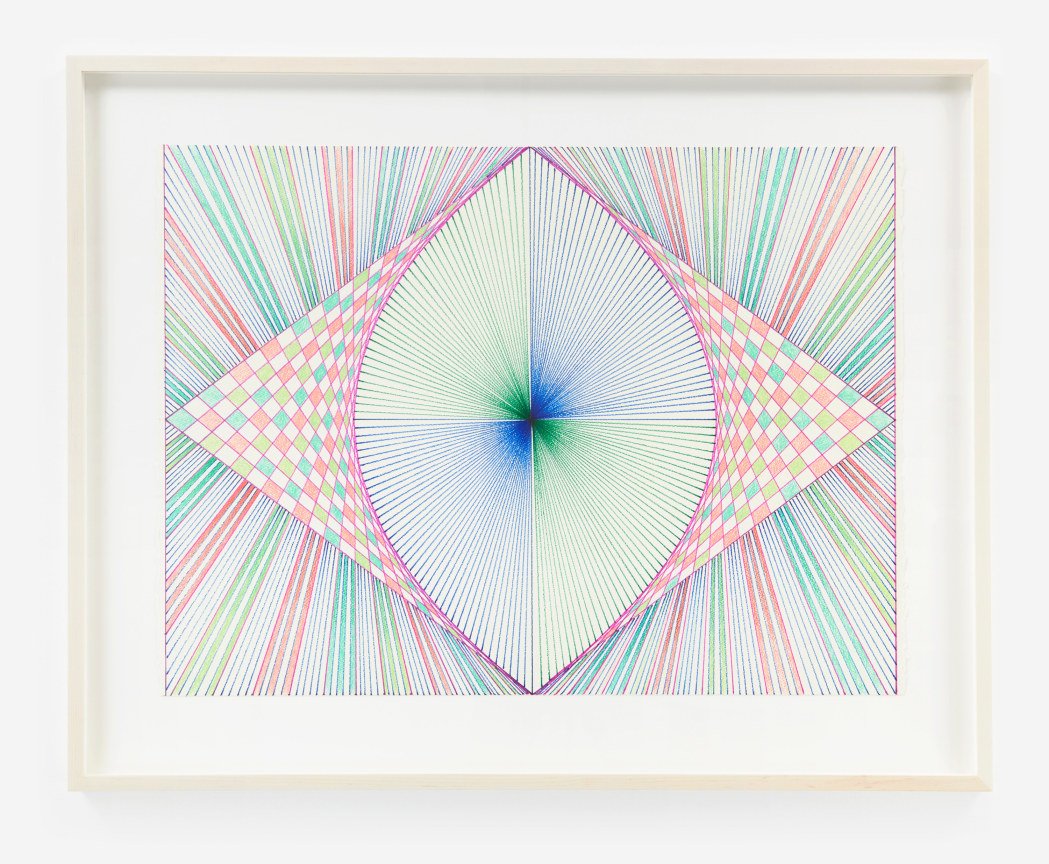
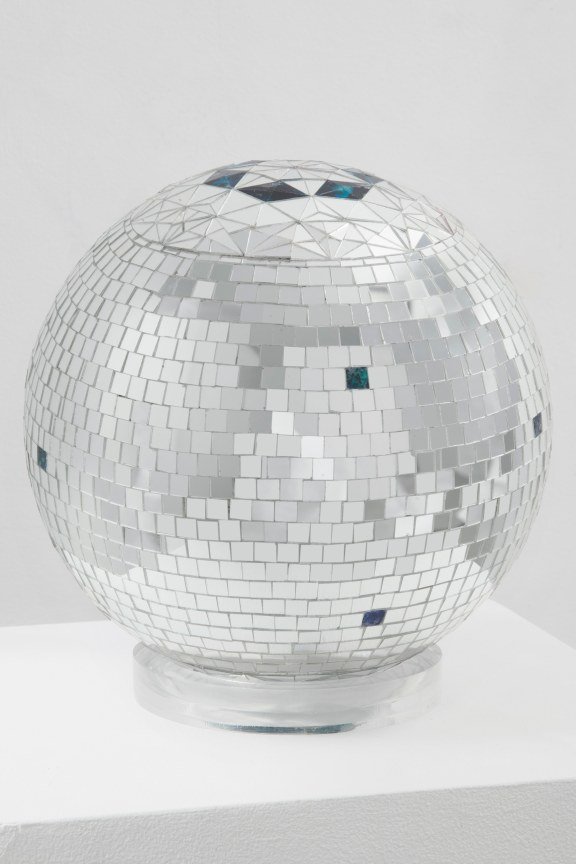
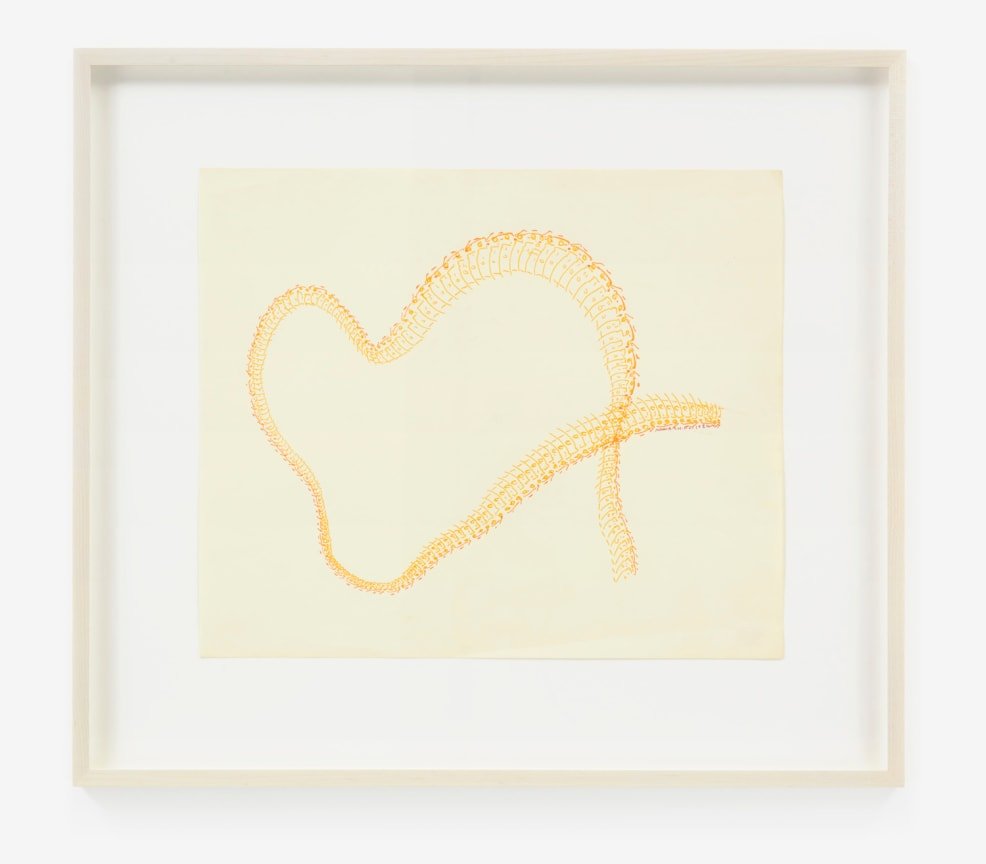
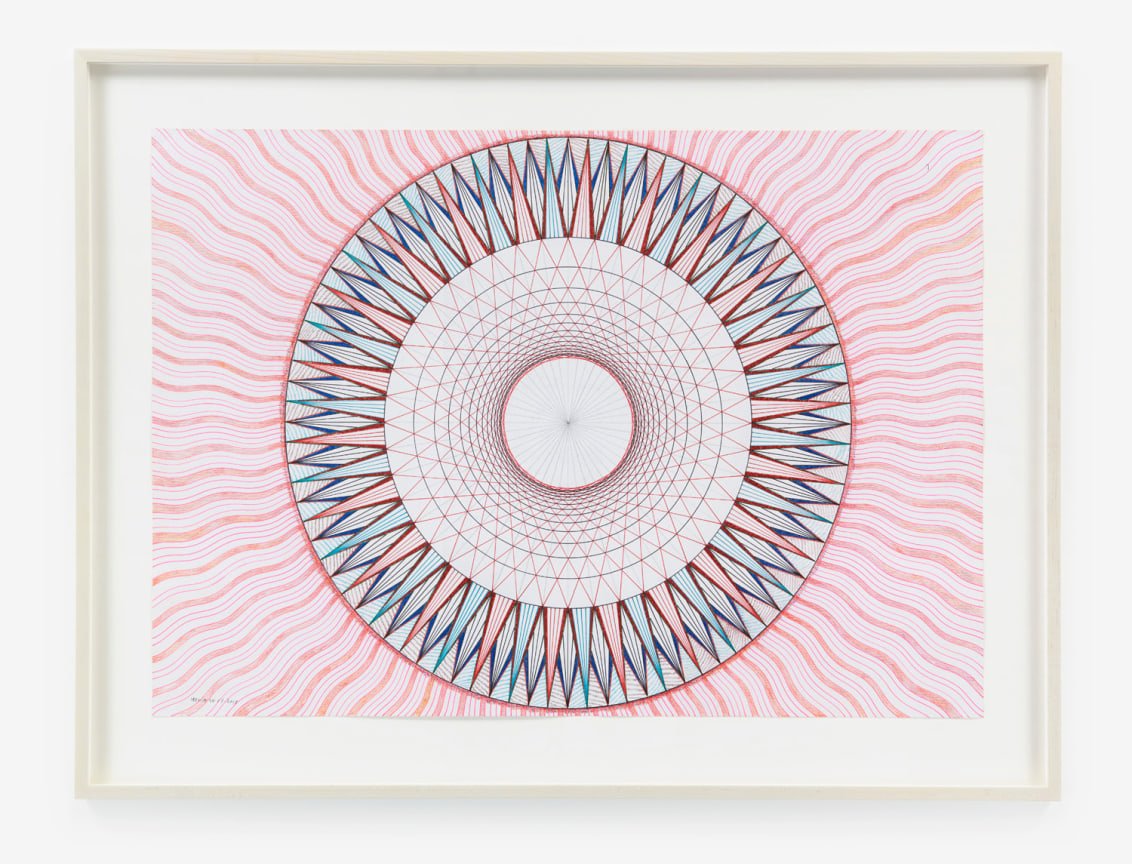
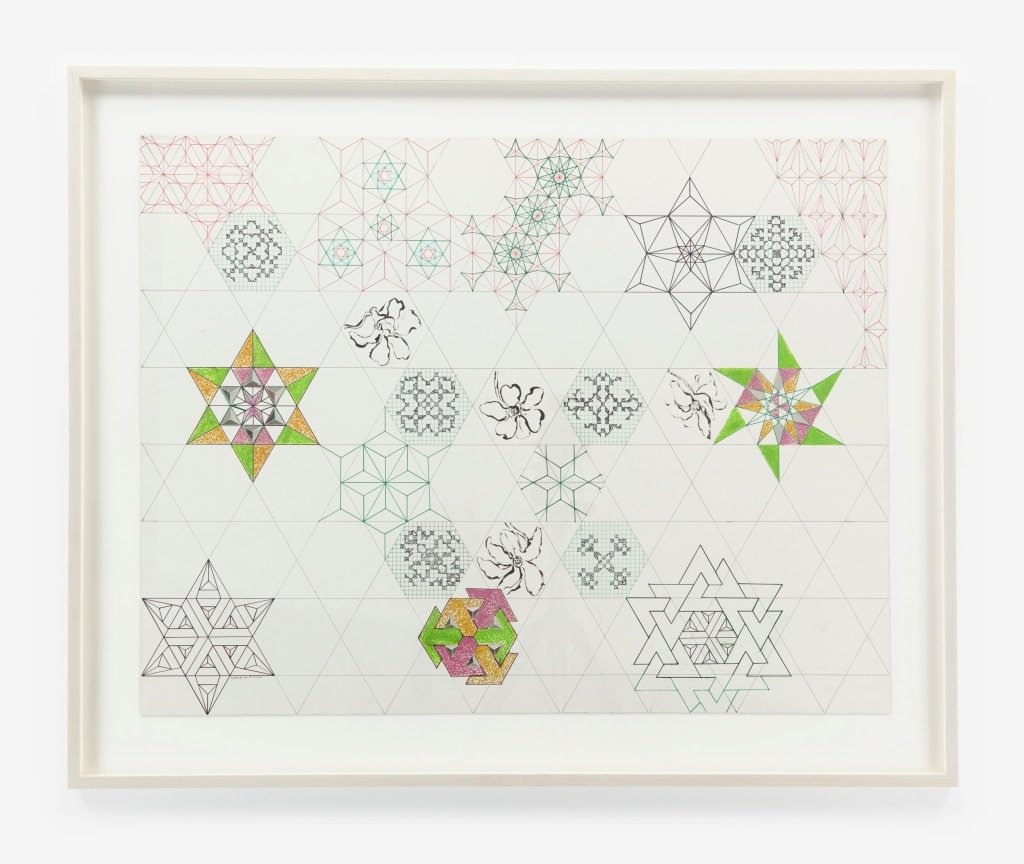
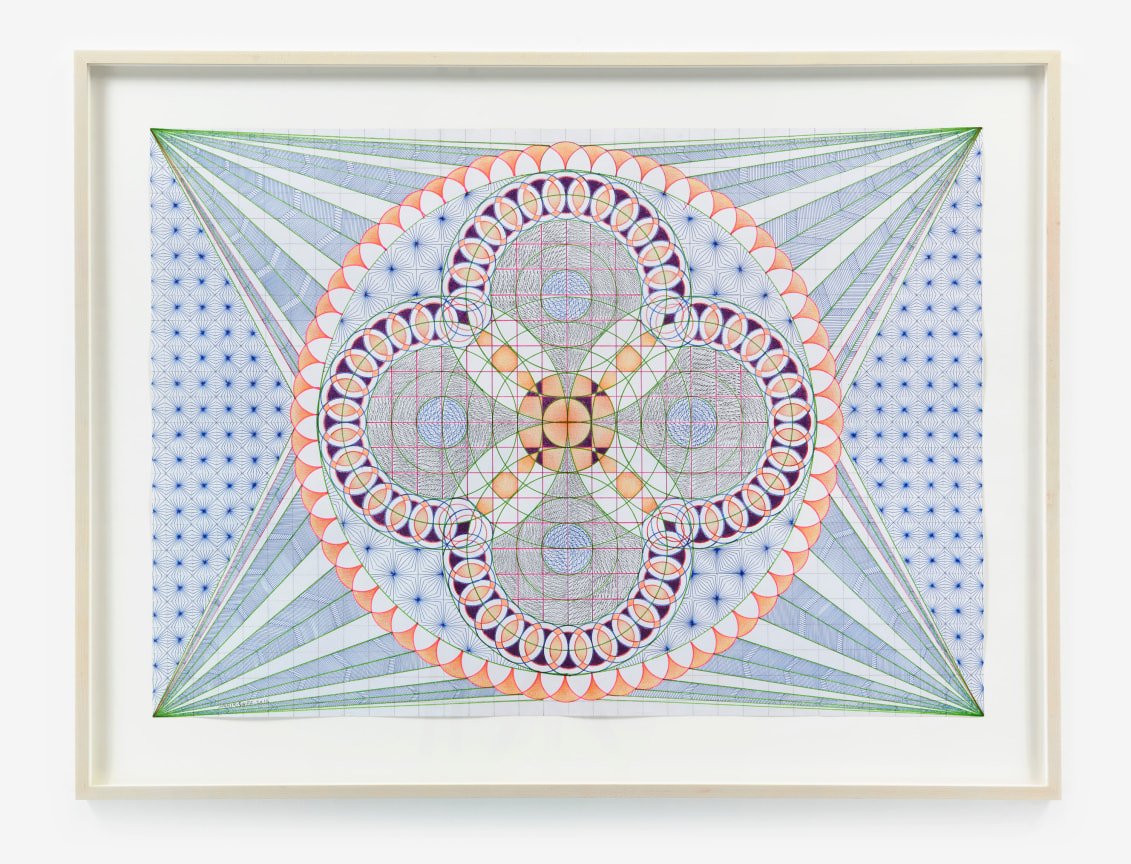

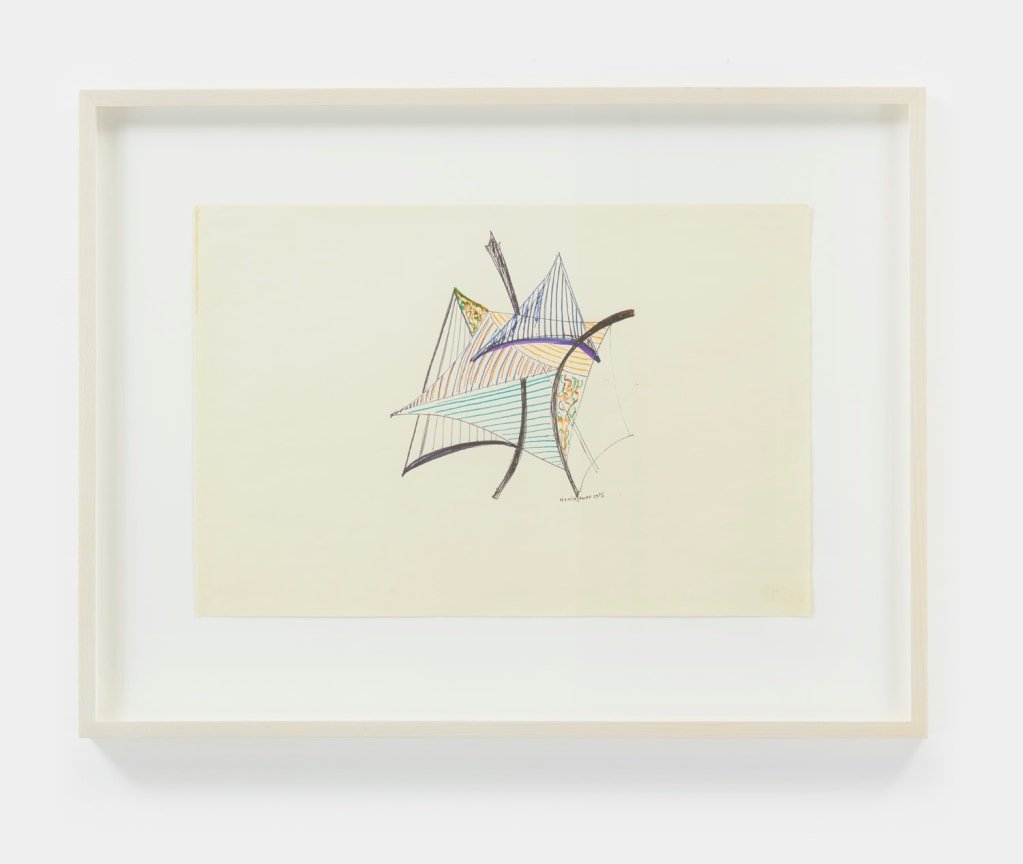
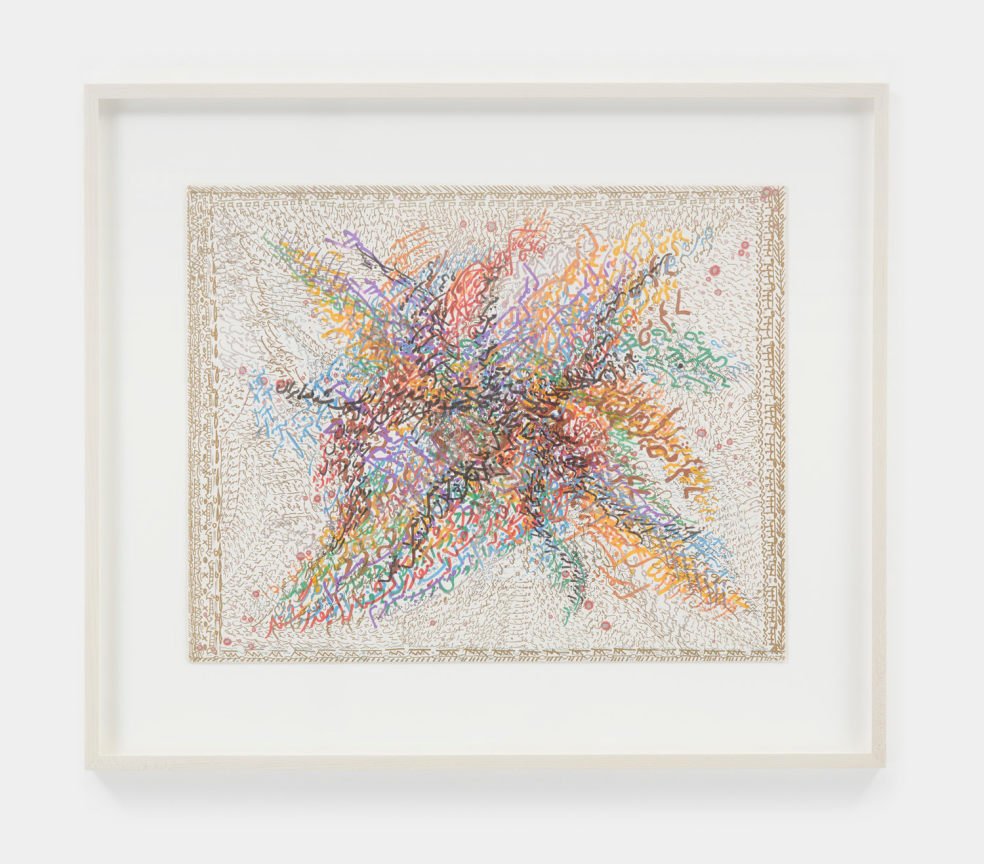

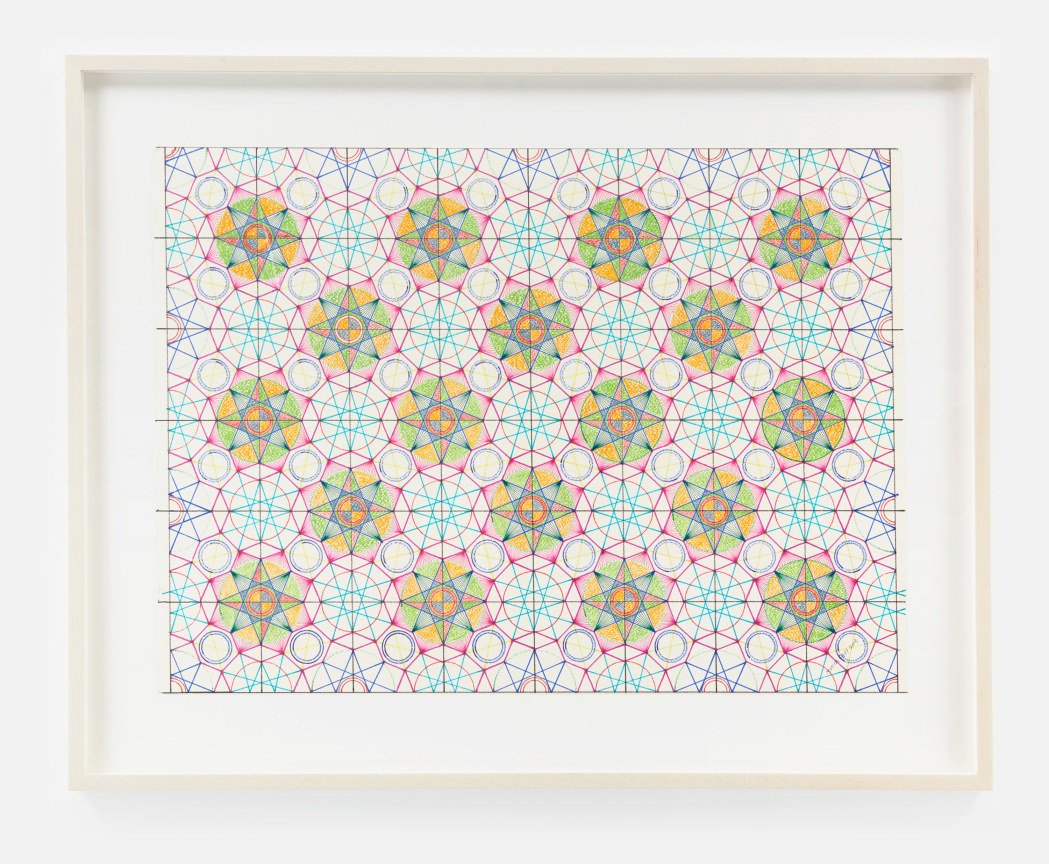
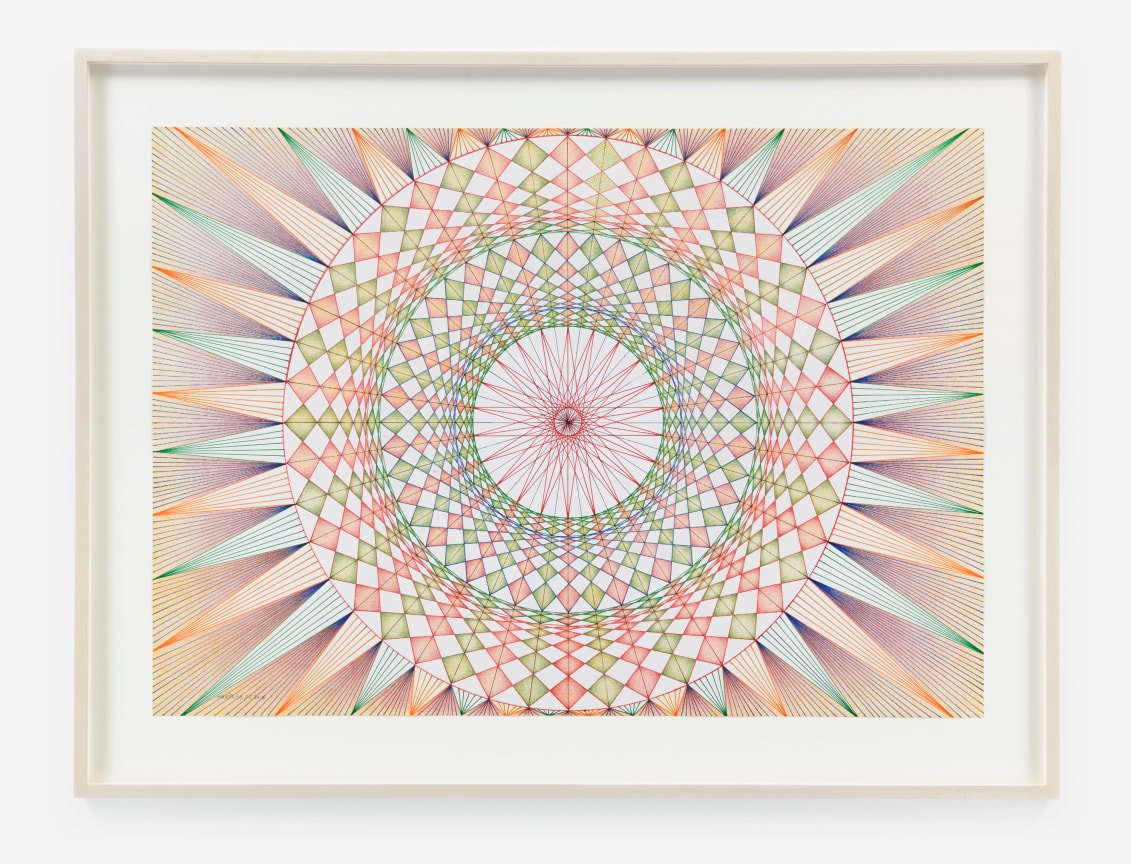
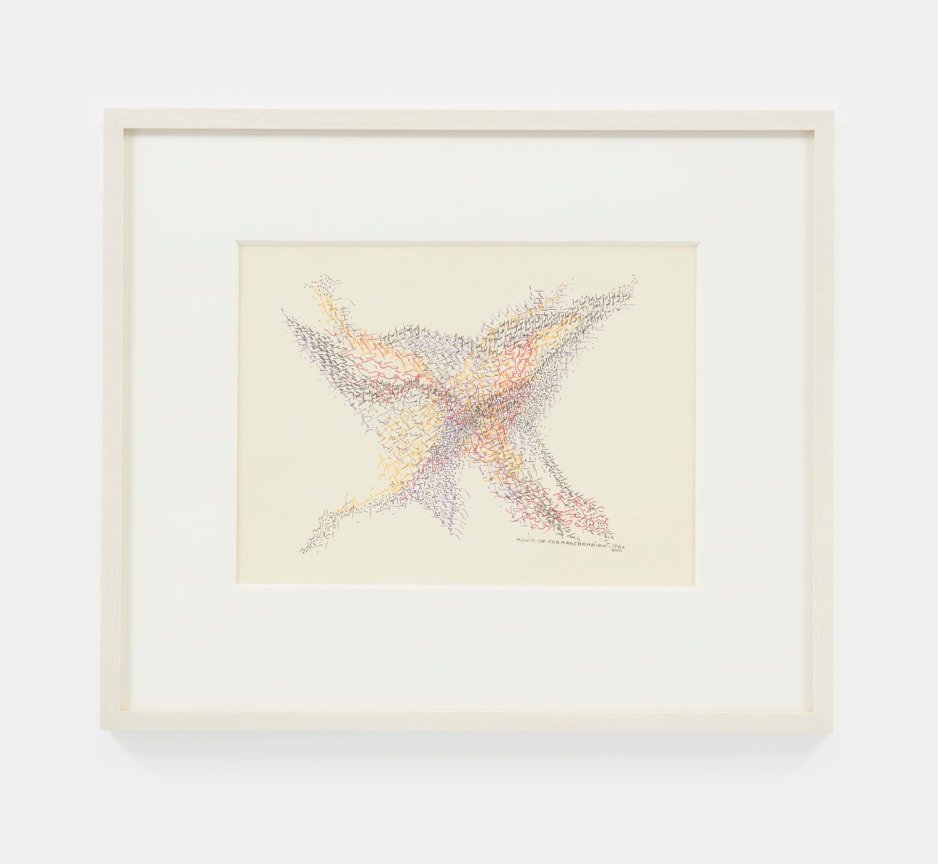
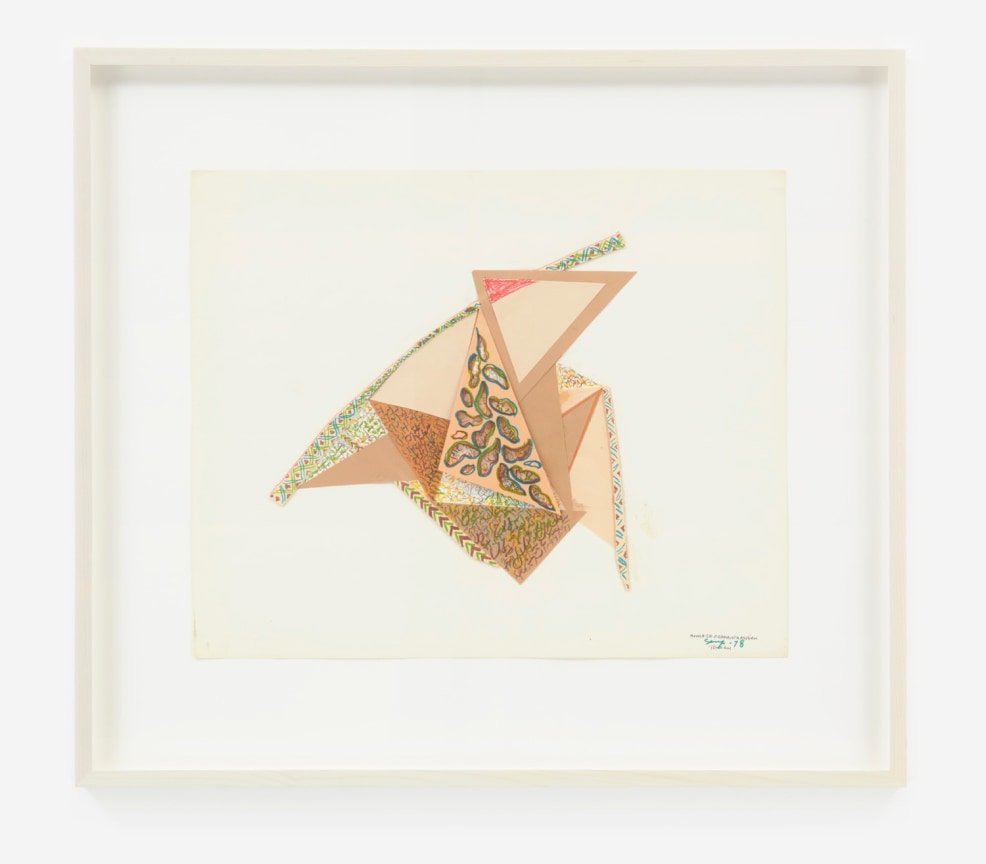
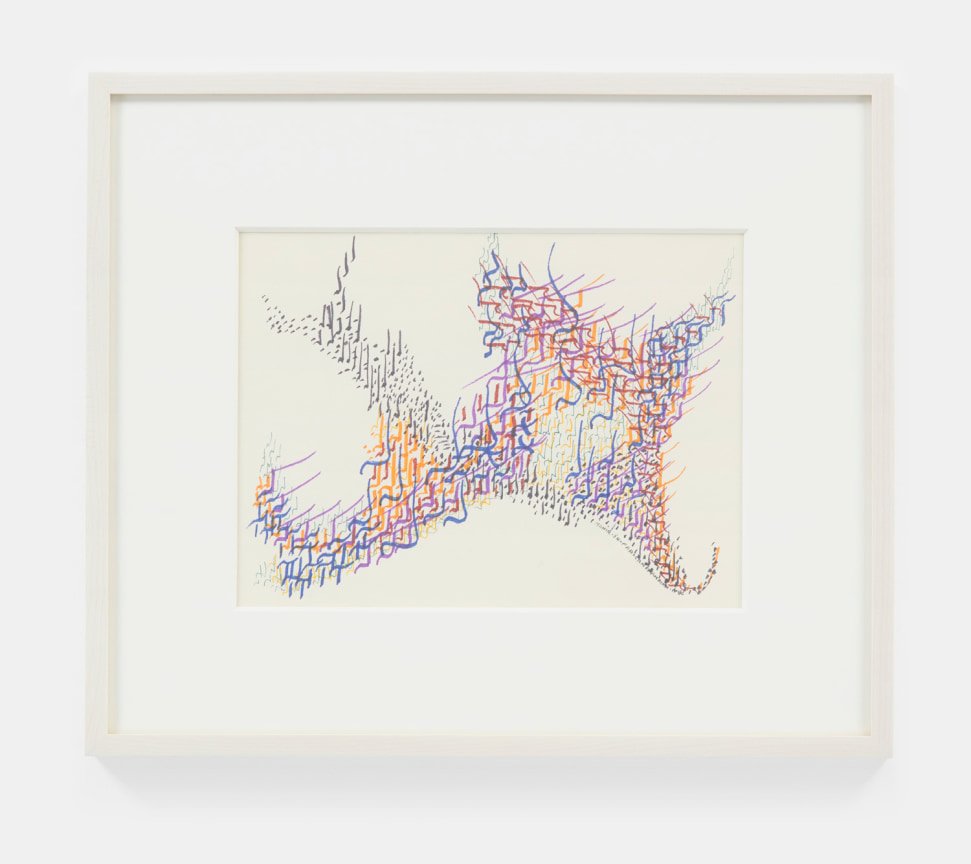
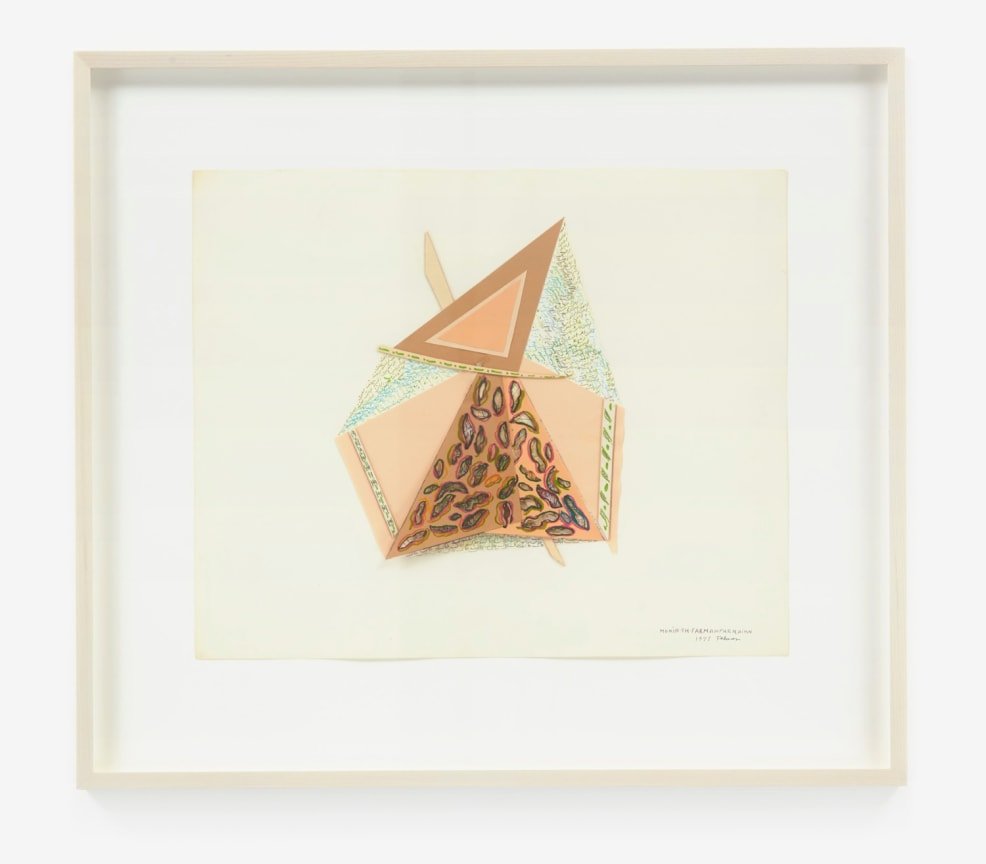
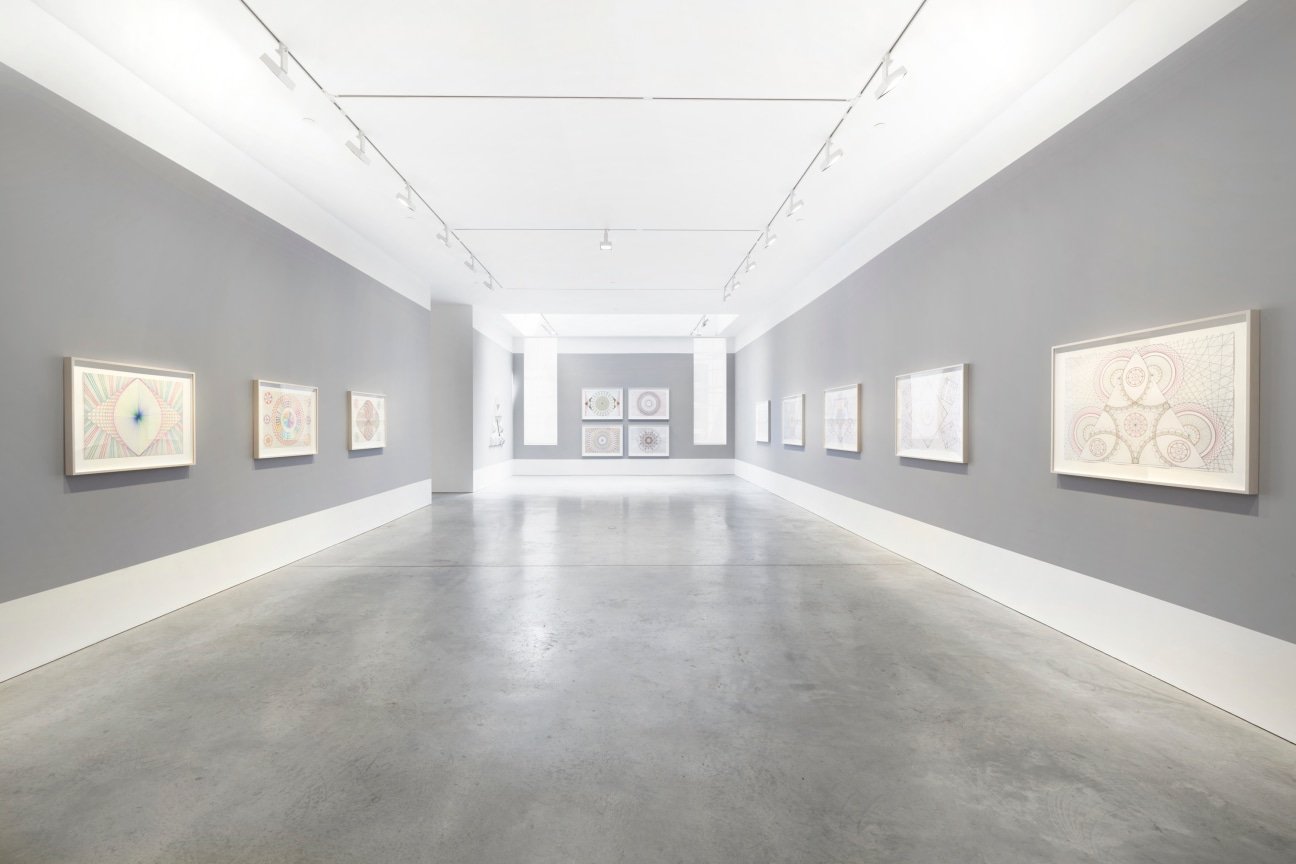

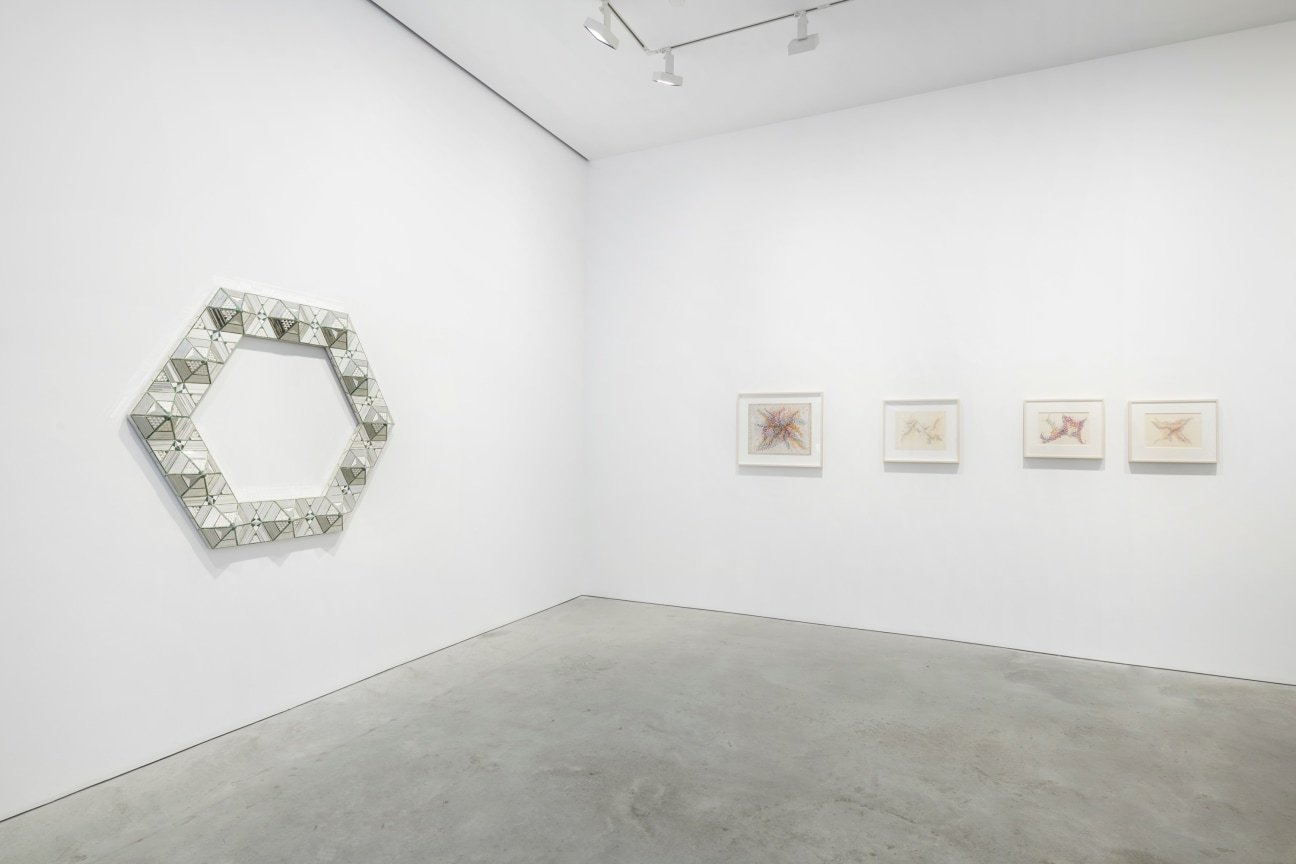
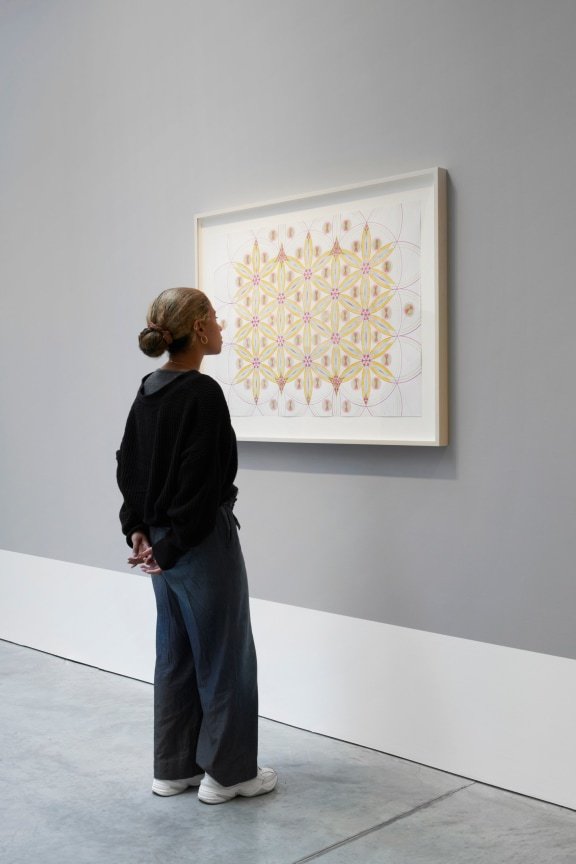
Over a career spanning six decades, the Iranian artist Monir Shahroudy Farmanfarmaian (1922 - 2019) looked to geometric forms and her Persian heritage as the basis for a rigorously structured and endlessly inventive exploration of the possibilities of line and space. Monir is best known for her mirror mosaic sculptural works, in which cut polygonal fragments of reverse-painted, reflective glass are arranged into kaleidoscopic compositions grounded on principles of Islamic geometry. This exhibition, however, explores the ways in which drawing lies at the heart of Monir’s multivalent practice, bringing together never-before-seen expressive early works on paper with later geometric drawings. These drawings demonstrate the medium’s significance as a spiritual and meditative process and a means for the artist to excercise free-flowing spatial thinking, creating her own language of symbols on a singular plane.
The earliest works in this exhibition are drawings and mixed media works from the 1970s and 80s, which reveal Monir’s desire to experiment with forms beyond pure geometry and draw upon both the natural world and a wide array of Persian cultural influences. These works on paper include depictions of chadors–tents built by Persian nomads–and richly detailed calligraphies, inspired by the artist’s own collection of historic calligraphies. Monir Shahroudy Farmanfarmaian, Untitled, 2015, Marker & felt pen on paper, 24 1/8 x 36 1/4 in. (61.3 x 92.1 cm) Monir’s chadors are graphic distillations of these temporary architectural structures; hand-drawn, collaged, and recomposed versions of the Siyah Chador (black tent) pitched by tribes throughout Iran. These kinetic mixed media works suggest overlapping flaps of a tent blowing in a breeze on an expansive empty terrain.
Monir’s calligraphy drawings from the 1980s demonstrate her increasing confidence of line and color with bold and intricate strokes. The artist completed these works while living in New York during a period of exile after the Iranian Revolution in 1978. Without access to her studio and the master craftsmen she worked with to build her mirror-mosaic works, Monir turned to drawing as a way to experiment artistically and connect with her home country from afar. Calligraphic script has a rich history in Persian culture and was originally developed to suitably transmit the beauty of the word of God in writing. Monir employed the Persian Ta’liq cursive style in these drawings, unifying horizontal and vertical strokes that she wove together in a series of vibrantly colored calligraphies. These works emphasize free-flowing and spontaneous forms that spiral and radiate across the page yet reinforce a remarkable sense of overall compositional structure.
Monir returned to Tehran in 2004, where she dedicated the last two decades of her life to intensive bouts of creation. She worked out of her studio with craftsmen to produce dazzling mirror-mosaic sculptures, three of which are included in this exhibition. Alongside her sculptural practice, Monir steadily generated precise and brightly colored felt-tip-marker and colored-pencil line drawings, rendering rhythmic spatial planes composed of interlocking geometric patterns in varying configurations. Dense, swirling lines that recall Monir’s earlier calligraphies fill the negative space of the drawing Untitled, 2016, in contrast with the sharply rendered lines of the circular forms they enclose. In several drawings from this period, lines and swaths of color intersect to generate abstract floral patterning. By referencing organic forms, like the flower, these drawings highlight the relationship between geometry and the real as well as geometry and nature, cementing her belief that “everything is in geometry.”
Monir’s experimentations in sculpture and drawing were influenced by her understanding of the expansive possibilities of line and form, utilizing principles of repetition and spatial progression in both mediums. In the sculptural work Fifth Family Hexagon, 2014, Monir generated a tessellation of shapes bound within the simple geometric shape of the hexagon, a foundational form she imbued with personal symbolic value. Extruding clusters of triangles, often delineated by green-painted mirror fragments, seem to leap from the snowy-white plaster that binds them. In the drawing Untitled, 2016, her prized hexagon anchors the composition of expansive geometric florals, holding together blue and yellow petal-like arrangements. Through her work in two and three dimensions, Monir crafted a new language of form and line, combining precision and spontaneity to unlock the limitless potential of symbols drawn in space.
Press release and images via James Cohan Gallery.
